Contents
More than a hundred years ago, the famous I. V. Michurin, as a result of long work, bred the Pepin Saffron variety. Now, on its basis, there are more than 20 zoned varieties, which makes it possible to grow apple trees in most of Our Country, even in the Urals and Siberia. And “Pepin saffron” continues to be a favorite of many gardeners and just lovers of apples. Its description can help gardeners clarify the issue of choosing apple trees for their garden.
Description and characteristics of the variety
trees «Pepin saffron do not grow too tall – usually a seedling with a round crown grows into a three-meter sprawling apple tree with drooping branches that can lean to the ground under the weight of fruits. The bark on young shoots is green, turning gray with age, the leaves are elongated, pubescent, green-gray, the stalks are long and thin. Fruiting begins from the 5th or 6th year, if the variety is grafted onto a dwarf stock, then from the 4th year of life. Young trees up to 10 years of age bring an average of 80 kg of apples, and after 10 years – from 190 to 220 kg.
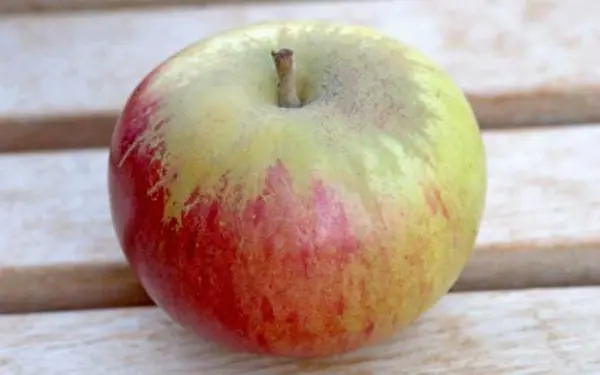
‘Pepin saffron’ was bred as a hardy variety, but young trees need to be covered for the winter. If an adult tree suffers from frost, then this will not become critical, it will survive the injury without consequences.
With proper care, the apple tree annually produces a bountiful harvest, and violations of care are fraught with chopping the fruit.
The description of the variety usually indicates its self-pollination, but many gardeners plant Antonovka, Slavyanka, Welsey nearby. It is said that in their presence “Pepin saffron” increases the yield.
Apple trees of this variety are considered winter. The fruits are harvested at the very end of September (or October, if the climate permits), and the peak of consumer ripeness comes closer to the new year. You can enjoy apples since August – then they are yellowish-green, hard and juicy, the taste is rather sour with sweetness than vice versa. In September, apples are filled with a bright saffron blush, the taste begins to correspond to the description of the variety – it becomes sweet with sourness.

There is a slight spicy wine aroma around the tree. Picked apples smell much stronger. Ripe fruits have a round-conical shape, in some, the edges implicitly show through, dots shine through a thin but strong skin. Their flesh is fine-grained and creamy in color. The fruits are medium in size, their weight varies from 80 to 140 grams. The size of apples is influenced by the density of the crown, so it has to be thinned out annually.
In order for the apples to last until spring, they are picked a little earlier than ripeness, completely undamaged specimens are selected and stacked in wooden boxes in layers, shifting them with sawdust or paper. It is advisable to take boxes and sawdust not from coniferous trees, otherwise the apples will change their natural aroma. Containers with fruits are kept in a cool room with a temperature of +1 to +3 degrees.
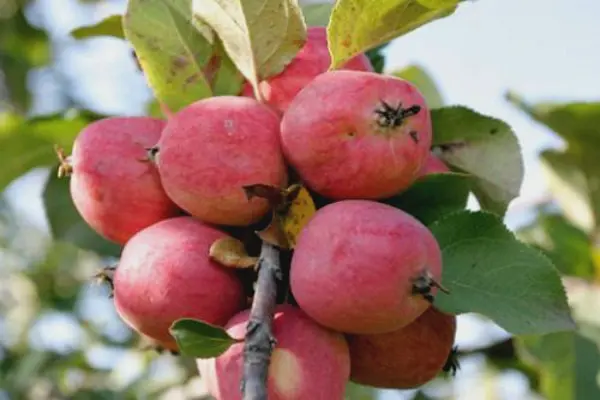
The description of “Pepina Saffron” draws attention to the fact that apple trees are prone to fungal diseases and scab, but proper care will allow you to deal with this. You can regularly carry out prevention so that you do not have to deal with treatment.
Peculiarities of growing
«Pepin saffron does not like acidic soils, prefers leached black soil, light but nutritious loamy or sandy soils. Apple trees of this variety cannot be planted in lowlands and places where there may be stagnant water, where groundwater is close to the surface, good drainage is important for them. It is best to choose an elevated open place that is well blown by air currents.
A place for an apple tree must immediately be chosen permanent. Painfully does not like “Pepin saffron” transplants.
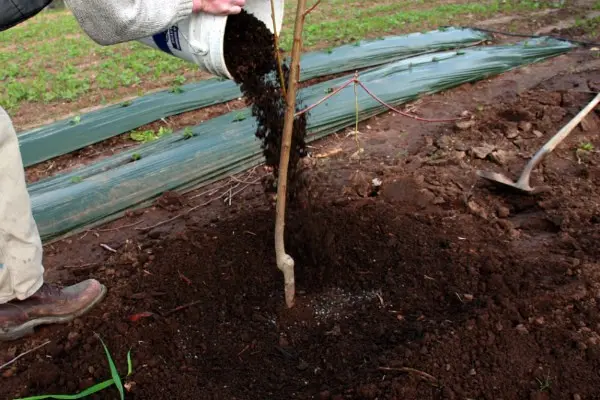
Apple trees can be planted in autumn and spring, but many gardeners prefer spring planting, because before winter the tree will have time to get stronger at least a little, and during autumn planting it will need to be specially prepared for wintering. Be that as it may, the site has been prepared for autumn planting since the beginning of August: compost, superphosphate and potassium salt are distributed on the site, then they are dug up.
If they are going to plant a tree in the spring, then in the fall they dig a hole with a diameter of at least 1,3 meters and a depth of 80 cm, half-rotted manure, azophoska and wood ash are added to the ground. Manure can be replaced with ready-made compost. All this mixture is again poured into the pit, covered with something from above from precipitation, and left until spring.
It is better to take seedlings of “Pepina saffron” for planting at the age of one or two years, preferably in nurseries or specialized stores. Before buying, you need to carefully examine them, you do not need to buy copies with the slightest damage or growths. The wood of a healthy seedling should be green, and the root should be wet, the grafting site should be clearly visible.
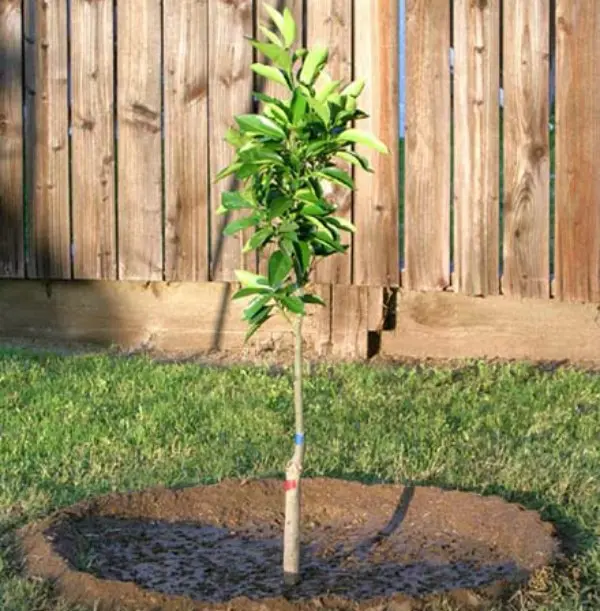
Before planting, the roots of the apple tree are soaked in water for 4 hours, and just before being lowered into the ground, they are dipped into a clay mash. At a pre-prepared place, they dig a hole 80 centimeters in diameter and 70 centimeters deep, 2 strong pegs are driven in on the sides, and a little loose earth is poured in the middle (which was previously taken out of the pit). Lowering the seedling into the pit, carefully straighten the roots, carefully cover them with earth, then trample the earth around. When properly planted, the root neck should rise 5 or even 7 centimeters above the ground. After that, the tree is leveled, tied to pegs, and a hole is made around it, into which water is poured, at least 30 liters under one tree.
After planting, a young tree is watered every week with 10 liters of water, sometimes this watering is divided into two parts: watered in the morning and in the evening. An adult tree is watered as needed, usually it happens a couple of times a month, of course, if it rains. It is best to check the moisture content of the earth – you need to take a handful of earth and squeeze it: if it crumbles after compression, then watering is necessary. The last two summer months are especially carefully watered – this is the time for the formation of fruit buds of the next year and the pouring of the fruits of the current year. And towards the end of August, watering is completely stopped. After the tree sheds all the leaves, it is moistened for the winter – watered so that the earth gets wet to a depth of a meter, this will help the roots to overwinter.

“Pepin saffron” loves nutritious soil. One tree needs an area of 15 square meters for proper nutrition, and with abundant fruiting, it selects a lot of the substances it needs, so they need to be replenished if we want to regularly receive rich harvests. Trees need organic and potassium-phosphorus fertilizers, which are applied after 2 or 3 years. After the trees have faded, they are watered fifteen times with diluted bird droppings, and in September rotted manure or compost is placed in the near-stem circle. If the ovaries crumble, then the tree is watered with slurry, diluted three times with water.
This variety is very picky about annual crown pruning. It is done in the spring before bud break. In the first year after planting, all branches should be shortened by two-thirds, and the central conductor should be cut into 2 buds. Then, for the next few years, they make a formative pruning – they designate skeletal branches, remove all branches that are 90 or even 45 degrees from the trunk, thin out, and remove damaged shoots.
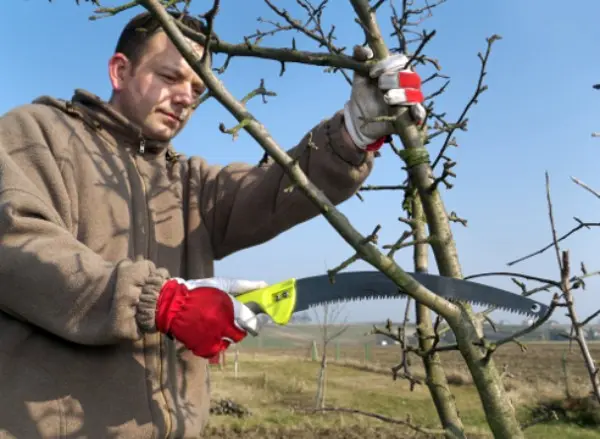
And then they produce rejuvenating and sanitary pruning, be sure to remove the branches that are trying to grow vertically inside the crown. In adult trees, the crown and skeletal branches are shortened. If you let the crown grow, the branches will obscure each other, this will certainly affect the harvest – the already medium-sized apples will generally turn into a trifle, the harvests will not be annual.
Although this variety is considered frost-resistant, young trees must be protected from frost. To do this, after the leaves fall, the branches are collected in a bunch, tied with paper or some special covering material, the ground around the trunk is mulched to a height of 10 cm with peat, manure or simply earth. Mature trees do not wrap like this, but when severe frosts strike, it is better to wrap the bole with covering material. For trees older than 5 years, it is recommended to whitewash the trunk with a garden emulsion with lime for the winter.
In winter, apple trees are afraid not only of frost, but also of hungry hares and small rodents wintering nearby. From hares, the trunks are wrapped with a garden net or just spruce branches. And rodents are scared away with special devices or traps are placed between the trees.
Video “Planting an apple tree seedling”
From this video you will learn an effective way to plant an apple tree seedling with 100% survival rate.
Diseases and pests
Unfortunately, in rainy summers or with a thickened crown, apple trees often suffer from scab. Proper care will help protect the trees – strong trees, in which fresh air penetrates deep into the crown, will be able to withstand this trouble.
Apple flower beetle, comma-shaped scale insect, codling moth – all of them can threaten the apple orchard. Preventive measures can be the implementation of normal sanitary requirements. It is necessary to remove fallen leaves, dig up the ground under the trees, make sure that there are no wounds on the branches and trunks. If any appear, they must be urgently treated with garden pitch. It is necessary to remove damaged or infected leaves and branches in a timely manner, to prevent the decomposition of carrion.
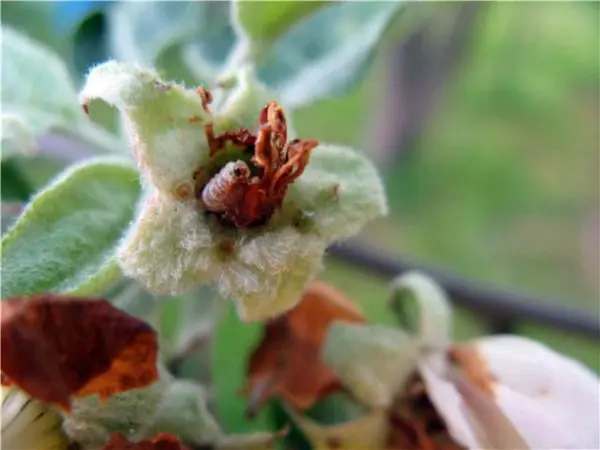
If, nevertheless, the pests settled on the trees, they use special means: Karbofos, Nitrafen, Metadion and others. The most important thing is to carefully study the instructions, pay attention to the time of use of the drugs.
Of course, you need to work hard to get rich harvests of such delicious fragrant and amazingly beautiful apples every year. But caring for them does not require too much time and effort, and the reward will be fruits full of vitamins and other useful elements that can protect the family from many diseases from autumn to spring.
Video “How to deal with scab on an apple tree”
In this video, an expert will tell you about apple scab and how to deal with it.









